
Best Coin to Buy Now Top Cryptocurrency for 2024
| Cryptocurrency | Market Cap | Liquidity | Volume | Tokenomics |
|---|---|---|---|---|
| Bitcoin BTC | Very High | Very High | Very High | Medium |
| Ethereum ETH | Very High | Very High | Very High | Great |
| Solana SOL | High | High | High | Medium |
| Avalanche AVAX | High | Medium | Medium | Great |
| Chainlink LINK | High | Medium | Medium | Medium |
| Cardano ADA | High | Medium | Medium | Okay |
| Cosmos ATOM | High | Medium | Medium | Okay |
| Polygon MATIC | High | High | High | Great |
| Binance Coin BNB | High | High | High | Medium |
| Thorchain RUNE | Medium | Medium | Medium | Great |
-
Bitcoin (BTC)

Bitcoin (BTC) is a decentralized digital currency that operates without a central authority or single administrator. It can be sent from user to user on the peertopeer bitcoin network without the need for intermediaries. Transactions are verified by network nodes through cryptography and recorded in a public distributed ledger called a blockchain. Bitcoin was invented by an unknown person or group of people using the name Satoshi Nakamoto and was released as open source software in 2009.
Key Features of Bitcoin:
- Decentralization: Unlike traditional currencies, Bitcoin operates on a decentralized network of computers. This means there’s no central control by any single institution or government.
- Limited Supply: The total supply of Bitcoin is capped at 21 million coins. This scarcity is one of the factors that contribute to its value.
- Mining: Bitcoins are created as a reward for a process known as mining. Mining involves using computer power to solve complex mathematical problems that validate transactions on the network. Successfully solving these problems rewards miners with new bitcoins, adding to the circulating supply.
- Anonymity and Transparency: While Bitcoin transactions offer a degree of anonymity; all transactions are recorded on the blockchain, making them publicly accessible and permanent. This ensures a level of transparency in the transaction process.
- Volatility: The value of Bitcoin can be highly volatile. Prices may fluctuate widely in short periods, making it a risky investment for some and a potentially lucrative one for others.
- Adoption and Use Cases: Over the years, Bitcoin has gained acceptance among both consumers and businesses as a method of payment. It’s also seen by many as a form of investment, similar to gold or other commodities.
Bitcoin’s innovation led to the creation of many other cryptocurrencies and blockchain projects, each aiming to solve different problems or improve upon the ideas introduced by Bitcoin. Despite its challenges, such as scalability issues, energy consumption of mining, and regulatory scrutiny, Bitcoin remains the most well-known and widely used cryptocurrency.
Market Capitalization: Very High (less volatile, but less upside)
Trading Volume: Very High
Liquidity: Very High
Use Case/Adoption: Great (clear, widespread & big market)
Tokenomics: Medium (negligible inflation and ultimately capped supply)
Development Team: Great (large and proven)
Community Support: Great (massive community)
Security & Transparency: Best in Class
Performance: Great
-
Ethereum ETH
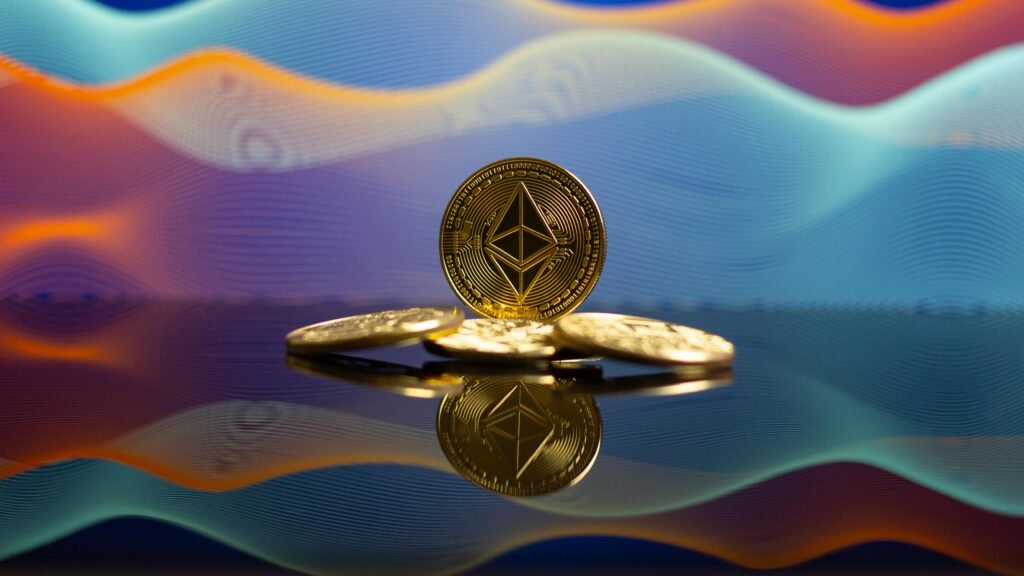
Ethereum (ETH) is a decentralized, open source blockchain system that features smart contract functionality. It is the second largest cryptocurrency platform by market capitalization, after Bitcoin. Ethereum was proposed in late 2013 by Vitalik Buterin, a cryptocurrency researcher and programmer, and development was crowd funded in 2014. The network went live on 30 July 2015.
Key Features of Ethereum:
- Smart Contracts: Ethereum’s key innovation is the smart contract, a program that runs on the Ethereum blockchain. Smart contracts automatically execute when predetermined conditions are met, without the need for a central authority or external enforcement mechanism. This technology enables a wide range of decentralized applications (DApps).
- Ethereum Virtual Machine (EVM): The EVM is the runtime environment for smart contracts in Ethereum. It is sandboxed and completely isolated from the network, file system, and other processes on the system. Every Ethereum node runs an EVM implementation and executes the same instructions, making Ethereum a truly decentralized platform.
- Ether (ETH): Ether is the native cryptocurrency of the Ethereum platform. It is used to compensate participants who perform computations and validate transactions on the network. Ether is also used for transaction fees and computational services on the Ethereum network.
- Decentralized Applications (DApps): Developers can build DApps on the Ethereum platform. These applications can range from games and marketplaces to complex financial services and more, all running on the blockchain without any central point of control.
- Decentralized Finance (DeFi): Ethereum has become a foundational platform for the DeFi movement, which aims to recreate and improve upon traditional financial systems, such as banks and exchanges, with decentralized technology. DeFi applications allow for financial transactions and services without the need for traditional financial intermediaries.
- Non-Fungible Tokens (NFTs): Ethereum has also popularized the use of NFTs, unique digital assets that represent ownership or proof of authenticity of a wide range of tangible and intangible items, from artwork and real estate to digital collectibles and more.
- Transition to Proof of Stake (PoS): Ethereum has been in the process of transitioning from a proof of work (PoW) to a proof of stake (PoS) consensus mechanism, which is less energy intensive and aims to improve the network’s scalability and security. This transition is part of Ethereum’s development roadmap and involves a series of upgrades, collectively known as Ethereum 2.0 or Eth2.
Ethereum has significantly impacted the blockchain and cryptocurrency landscape, introducing the concept of a programmable blockchain and expanding the potential applications of blockchain technology beyond simple financial transactions.
Market Capitalization: Very High (less volatile, but less upside)
Trading Volume: Very High
Liquidity: Very High
Use Case/Adoption: Great (clear, widespread & big market)
Tokenomics: Great (deflationary and capped supply since the ethereum merge)
Development Team: Great (large and proven)
Community Support: Great (massive community)
Security & Transparency: Great (while the blockchain is secure and transparent, malicious smart contracts can be dangerous for ordinary users)
Performance: Great
-
Solana SOL
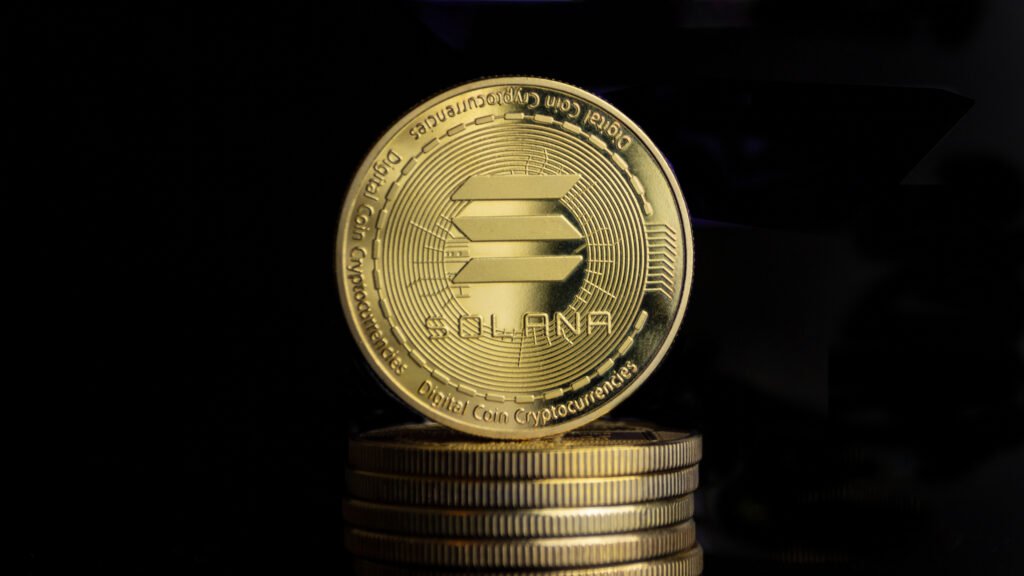
Solana (SOL) is a highly perform ant blockchain platform designed for decentralized applications (dApps) and cryptocurrencies. Launched in March 2020 by Solana Labs, it is known for its high throughput and fast transaction speeds, achieved through its unique consensus mechanism and architectural design. Solana aims to improve blockchain scalability by introducing several innovative technologies:
Key Features of Solana:
- Proof of History (PoH): One of Solana’s core innovations is Proof of History, a sequence of computation that provides a way to cryptographically verify the passage of time between two events. PoH is used in conjunction with Proof of Stake (PoS) in Solana’s consensus mechanism, allowing for greater scalability and efficiency.
- High Throughput and Scalability: Solana can process tens of thousands of transactions per second (TPS) with low transaction fees. Its scalability ensures that as the network grows, it remains capable of supporting high transaction volumes without significant increases in cost or time.
- Low Transaction Fees: Due to its high throughput, Solana offers very low transaction fees, making it attractive for both developers and users of dApps, especially those requiring numerous transactions, like decentralized finance (DeFi) applications and no fungible token (NFT) marketplaces.
- Solana Program Library (SPL): Solana features a suite of on chain programs that are designed to be reusable and composable. The Solana Program Library is akin to Ethereum’s ERC standards, providing a standardized way to build and interact with core functionalities like token creation, exchange, and others.
- Growing Ecosystem: The Solana ecosystem has seen rapid growth, hosting a wide array of projects across DeFi, NFTs, Web3, and more. Its efficient infrastructure has attracted developers looking to build scalable applications.
- Staking and Governance: SOL, Solana’s native token, is used for transaction fees and for staking. Holders of SOL can stake their tokens to participate in the network’s security and consensus mechanisms, earning rewards in the process. SOL also plays a role in governance, with stakeholders having a say in the future development of the network.
Challenges and Considerations:
Network Outages: Solana has faced criticism and challenges related to network stability and outages, which have raised questions about its readiness for widespread adoption. The team has been actively working on improvements to enhance network resilience.
Centralization Concerns: Some critics point out that Solana’s architecture, which requires relatively high hardware specifications for validator nodes, could lead to greater centralization compared to other blockchains. However, its supporters argue that this trade off is necessary for achieving high throughput and efficiency.
Solana represents a significant effort to scale blockchain technology, making it more practical for a wide range of applications. Its continued development and the growth of its ecosystem are closely watched by both enthusiasts and skeptics of blockchain technology.
Market Capitalization: High
Trading Volume: High
Liquidity: High
Use Case/Adoption: Great (the high speed of Solana makes it the best solution for many use cases which led to strong adoption in a very short period of time)
Tokenomics: Medium (with an initial inflation rate of 8% scaling down to 1,5% the tokenomics are not favorable, but also not too bad)
Development Team: Medium (it remains to be seen if the big issues of Solanas unique consensus algorithm can be fixed in the future)
Community Support: Great
Security & Transparency: Bad (due to the high resource cost needed to run a Solana node, the control of the network lies in the hands of few actors, who have high power over it, as seen by multiple chain halts in the past)
Performance: Great
-
Avalanche AVAX
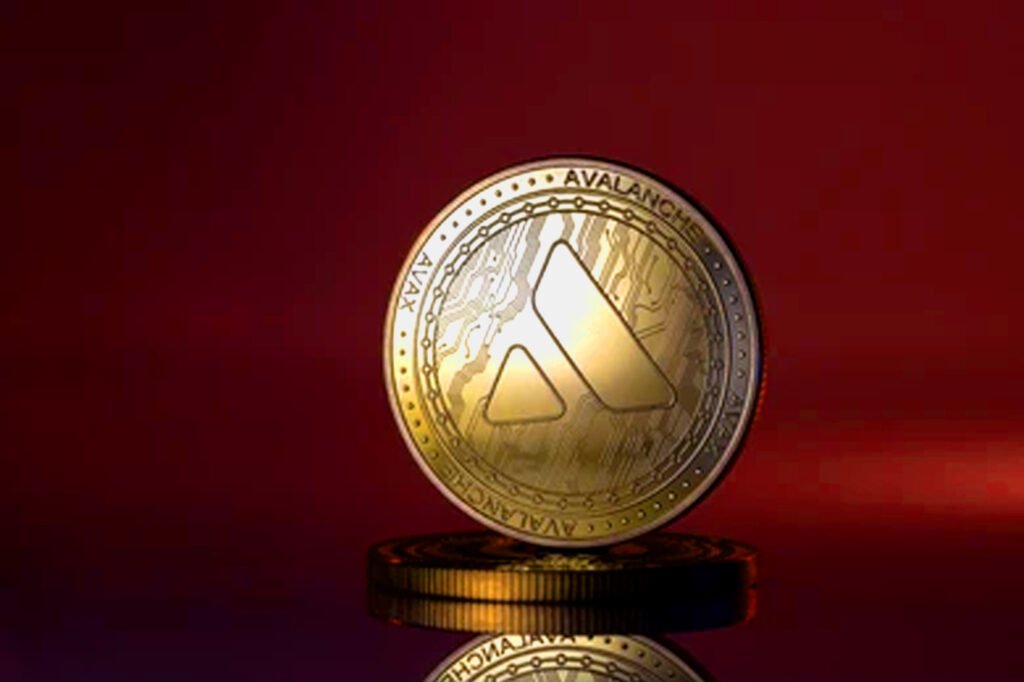
Avalanche (AVAX) is a decentralized, open source blockchain platform designed to provide high throughput, low latency, and scalability while maintaining security. Developed by Ava Labs, a team led by Cornell professor Emin Gün Sirer, Avalanche was launched in September 2020. The platform aims to address some of the limitations of earlier blockchain systems, including slow transaction speeds and scalability issues, making it an attractive option for building decentralized applications (DApps) and custom blockchain networks.
Key Features of Avalanche:
- High Throughput and Scalability: Avalanche boasts high transaction throughput, capable of processing thousands of transactions per second (tps), with transaction finality achieved in under a second. This makes it one of the fastest blockchain platforms available.
- Consensus Mechanism: Avalanche uses a novel consensus mechanism that is a combination of classical consensus and Nakamoto consensus approaches. This unique mechanism allows the network to achieve high throughput and quick finality with strong security guarantees.
- Subnets: The Avalanche platform allows for the creation of subnets, or sub networks, which are custom blockchains that can be tailored for specific use cases or applications. This feature enables a high degree of customization and scalability, as each subnet can have its own rules, validators, and token.
- Compatibility and Interoperability: Avalanche is designed to support the Ethereum Virtual Machine (EVM), allowing developers to easily port their Ethereum DApps and smart contracts to Avalanche to benefit from higher speeds and lower costs. This compatibility also facilitates interoperability between Avalanche and Ethereum ecosystems.
- Tokenomics: AVAX is the native token of the Avalanche platform. It is used for transaction fees, as a basic unit of account among the multiple blockchains deployed on the Avalanche network, and for staking. Validators and delegators can earn rewards by staking AVAX tokens, which helps secure the network.
- Decentralized Finance (DeFi) and Applications: Avalanche has seen significant adoption in the DeFi space, with numerous projects building on its platform to take advantage of its speed, scalability, and low transaction costs. This includes decentralized exchanges (DEXs), lending platforms, and more complex financial instruments.
- Energy Efficiency: Compared to proof of work (PoW) based blockchains like Bitcoin, Avalanche’s consensus mechanism is much more energy efficient, making it an environmentally friendlier option for blockchain applications.
Avalanche aims to be a highly versatile platform for decentralized applications and custom blockchain solutions, competing directly with other smart contract platforms like Ethereum, Solana, and Polkadot by offering a unique blend of scalability, security, and interoperability.
Market Capitalization: High
Trading Volume: Medium
Liquidity: Medium
Use Case/Adoption: Good (with many gaming projects recently launching on Avalanche, the protocol has established itself as the goto technology for gaming)
Tokenomics: Great (part of the fee token get burned, resulting in a deflationary asset)
Development Team: Great
Community Support: Medium
Security & Transparency: Great (over 100 independent nodes)
Performance: Great
-
Chainlink LINK
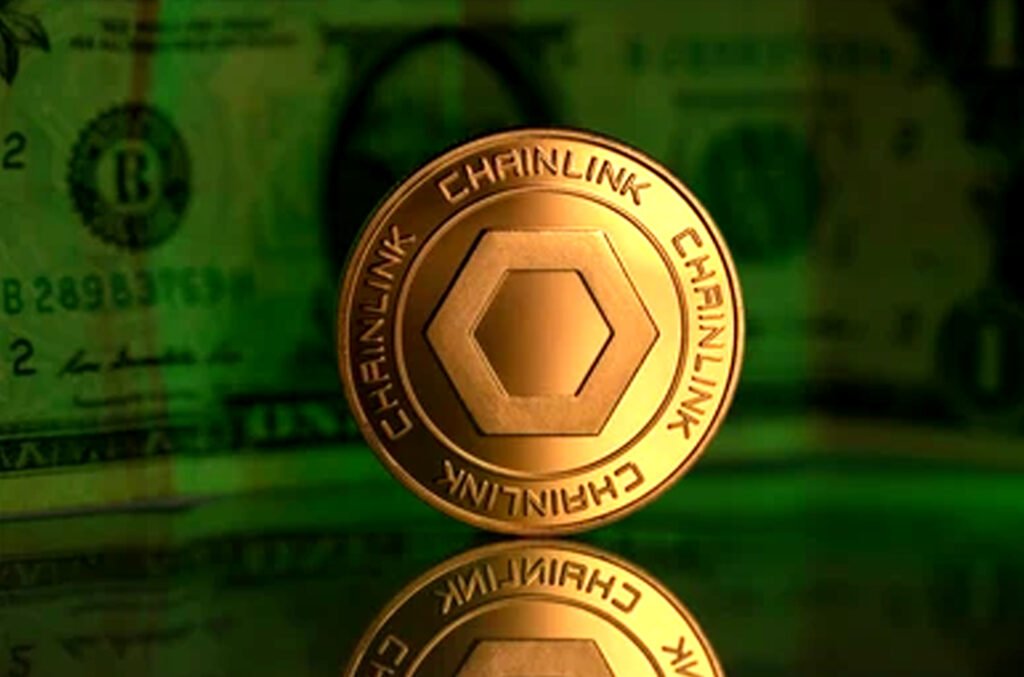
Chainlink (LINK) is a decentralized oracle network designed to provide external data to smart contracts on blockchain platforms. Since its inception, Chainlink has aimed to solve one of the fundamental problems in the use of smart contracts on blockchains: the inability to access real world data that exists offchain. This limitation prevents smart contracts from being used in a wide array of applications that require data inputs from the real world, such as market prices, weather data, or other offchain feeds. Chainlink was launched by Sergey Nazarov and Steve Ellis, with its initial whitepaper published in 2017.
Key Features of Chainlink:
- Decentralized Oracles: Chainlink’s primary innovation is its decentralized network of oracles, which allows smart contracts to securely interact with external data feeds, APIs, and traditional bank payments. This enables smart contracts to execute based on inputs and outputs from the real world.
- Trust Minimization: By using a decentralized network of oracles, Chainlink reduces the risk of relying on a single source of truth. This approach minimizes trust in any single party and enhances the security and reliability of data feeds.
- LINK Token: The native token of the Chainlink network is LINK. It is used to pay for services on the network, including data requests to oracles, and as a form of security deposit by oracle providers. The LINK token incentivizes data providers to furnish accurate data since their earnings and reputations are at stake.
- Flexibility and Adaptability: Chainlink is designed to be blockchain agnostic, meaning it can provide data to smart contracts on various blockchain platforms. This flexibility has led to widespread adoption across multiple blockchains and smart contract development environments.
- Use Cases: The applications for Chainlink are vast and include providing price feeds for decentralized finance (DeFi) platforms, weather data for insurance contracts, flight information for travel insurance, and much more. Essentially, any smart contract that requires secure, reliable realworld data can potentially use Chainlink.
- Partnerships and Integration: Chainlink has established numerous partnerships across the cryptocurrency and traditional industries. It has become a critical piece of infrastructure for many DeFi projects and other blockchain based applications seeking to interact with real world data.
Chainlink’s development and adoption underscore the importance of oracles in the blockchain ecosystem, bridging the gap between on chain and off chain worlds. As the blockchain space continues to evolve, the role of decentralized oracle networks like Chainlink is likely to become increasingly vital.
Market Capitalization: High
Trading Volume: Medium
Liquidity: Medium
Use Case/Adoption: Great (Chainlink is a fundamental component of smart contracts, providing secure communication between external data sources and payment systems across all major protocols.)
Tokenomics: Medium (the fixed supply cap adds scarcity and a growing network adding demand will drive the price)
Development Team: Medium
Community Support: Medium
Security & Transparency: Good (multiple independent nodes are incentivized to maintain their reputation and excellent data quality with LINK token)
Performance: Great
-
Cardano ADA

Cardano (ADA) is a public blockchain platform that is open source and decentralized, featuring smart contract functionality. It aims to provide a more balanced and sustainable ecosystem for cryptocurrencies. Cardano distinguishes itself by being founded on peer reviewed research and developed through evidence based methods. It was created by blockchain development firm IOHK and its cofounder, Charles Hoskinson, who is also a cofounder of Ethereum.
Key Features of Cardano:
- Ouroboros Proofof Stake (PoS) Algorithm: Cardano uses a unique proof of stake algorithm called Ouroboros, which is designed to be more energy efficient than the proof of work (PoW) algorithms used by Bitcoin and some other cryptocurrencies. Our oboros divides time into epochs and slots, where epochs are the overarching time frames and slots are short periods within epochs. In each slot, a slot leader is chosen to validate transactions and create a new block.
- Layered Architecture: Cardano’s architecture is divided into two main layers: the Cardano Settlement Layer (CSL) and the Cardano Computation Layer (CCL). The CSL handles the transaction and ledger functions, while the CCL is designed for smart contracts and decentralized applications (DApps). This separation allows for more flexibility and easier maintenance and upgrades.
- Smart Contracts and DApps: Despite a later start compared to other major smart contract platforms, Cardano aims to support a robust environment for DApps and smart contracts, focusing on security and scalability. It leverages formal verification methods and a high assurance development framework to ensure the reliability and correctness of the code running on its platform.
- ADA Token: ADA is the native cryptocurrency of the Cardano platform. It is used for various purposes, including transaction fees, staking as part of the network’s consensus mechanism, and as a means of transferring value.
- Research Driven Approach: One of Cardano’s hallmarks is its commitment to a scientific philosophy and research driven approach. The platform’s development involves peer reviewed research, where proposals are rigorously scrutinized by academics and industry experts before implementation. This approach aims to ensure the platform’s scalability, interoperability, and sustainability.
- Interoperability and Scalability: Cardano is being developed with a strong focus on interoperability and scalability. It aims to enable crosschain transfers and other forms of interoperability with different blockchain platforms. Additionally, it seeks to address scalability issues through technologies like side chains and layer 2 solutions.
- Governance: Cardano also features a governance model that allows ADA holders to vote on proposed updates to the software, aiming for a self-sustaining blockchain ecosystem.
As of last update in April 2023, Cardano continues to evolve, with ongoing development aimed at enhancing its capabilities and ecosystem. Its research driven and methodical approach to development sets it apart in the crowded blockchain space, though it also faces competition from other platforms seeking to solve similar challenges in scalability, interoperability, and governance.
Market Capitalization: High
Trading Volume: Medium
Liquidity: Medium
Use Case/Adoption: Great (clear, widespread & big market)
Tokenomics: Okay (burn mechanism to reduce supply is great, Despite the significant reduction in supply; the initial sale is still placing a considerable amount of influence on the market by founders and early investors.)
Development Team: Great
Community Support: Great
Security & Transparency: Great (while the blockchain is secure and transparent, malicious smart contracts can be dangerous for ordinary users)
Performance: Great
-
Cosmos ATOM
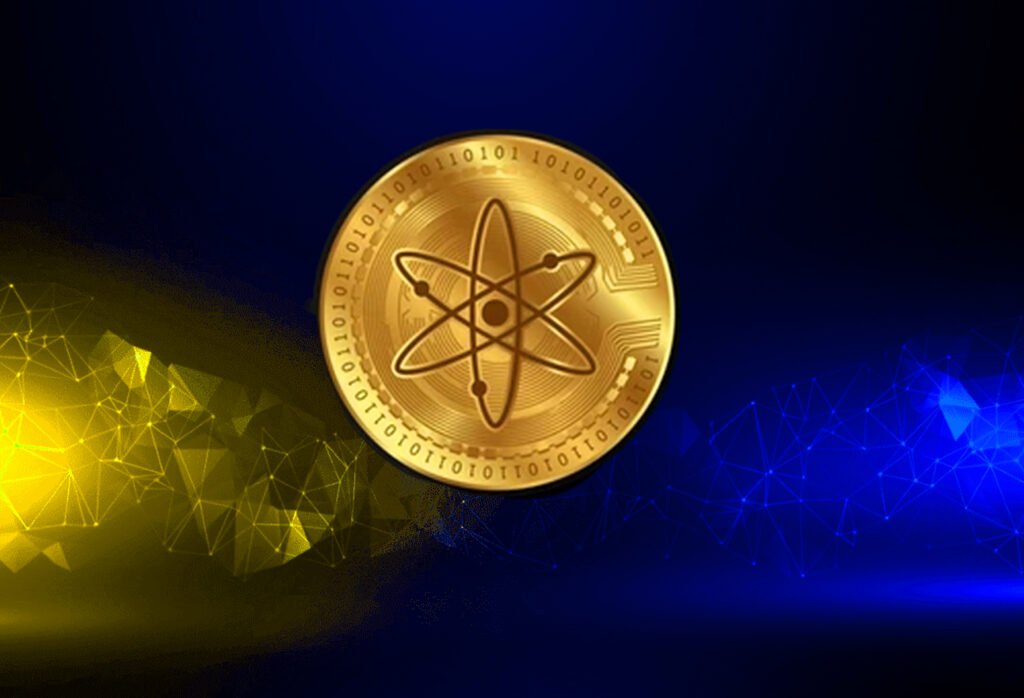
Cosmos (ATOM) is a decentralized network of independent parallel blockchains, each powered by classical consensus algorithms like Byzantine Fault Tolerance (BFT). The project’s goal is to solve some of the hardest problems facing the blockchain industry, such as scalability, usability, and interoperability, through a set of opensource tools like Tender mint, the Cosmos SDK, and the Inter Blockchain Communication (IBC) protocol. Cosmos envisions an “Internet of Blockchains,” a network of blockchains able to communicate with each other in a decentralized way.
Key Features of Cosmos:
- Interoperability: The Inter Blockchain Communication (IBC) protocol is a pivotal aspect of Cosmos, enabling data and token transfers between different blockchains. This capability allows Cosmos to facilitate interoperability and create a network of blockchains that can interact seamlessly with one another.
- Scalability: Cosmos aims to improve scalability through the use of a modular framework that allows developers to build customized blockchains for specific applications. By enabling blockchains to process transactions and operations independently, Cosmos can significantly increase the overall capacity of the network.
- Tender mint BFT: At the core of Cosmos is Tender mint BFT, a consensus engine that packages the networking and consensus layers of a blockchain into a generic engine. This allows developers to focus on application development rather than the complex underlying protocol, making blockchain development more accessible.
- Cosmos SDK: The Cosmos SDK is a modular framework for building blockchain applications. It provides developers with the tools and building blocks to create customized blockchains tailored to specific use cases. The SDK is designed to be interoperable with the Tender mint consensus engine.
- ATOM Token: ATOM is the native cryptocurrency of the Cosmos network. It’s used for transaction fees, staking, and participating in the governance of the network. Holders of ATOM can stake their tokens as collateral to validate transactions (via validators) and earn rewards. They also have the ability to vote on proposals that influence the development and governance of the Cosmos Hub.
- Cosmos Hub and Zones: The Cosmos network consists of the Cosmos Hub and multiple other sovereign blockchains called Zones. The Cosmos Hub is the central blockchain that connects all the Zones. Zones are independent blockchains that can have their own governance, and they connect to the Cosmos Hub using IBC.
- Sovereignty: Despite being part of the Cosmos network, each blockchain maintains its sovereignty. This means they can have their own governance models, token economics, and operate independently while still benefiting from the ecosystem’s interoperability and scalability features.
Cosmos represents a significant step towards solving the fragmentation in the blockchain space by promoting greater interoperability and scalability. Its vision of an “Internet of Blockchains” where different blockchains can communicate and transact seamlessly could enable a new level of decentralization and collaboration across the industry.
Market Capitalization: High
Trading Volume: Medium
Liquidity: Medium
Use Case/Adoption: Medium (clear target market but still early in adoption)
Tokenomics: Okay (Despite the ongoing inflation, the Cosmos Hub token is being utilized as a safety net for independent chains that do not want to employ their own validators.)
Development Team: Great
Community Support: Medium
Security & Transparency: Great (the interchain transfers between CosmosSDK chains far surpass traditional bridges due to being completely decentralized)
Performance: Great
-
Polygon MATIC
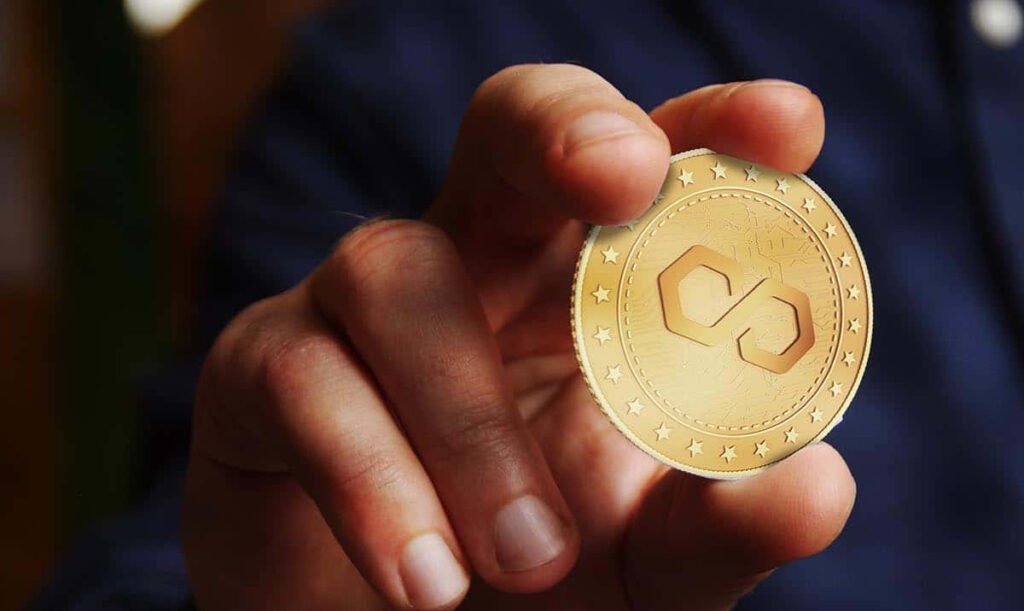
Polygon (previously known as Matic Network) is a multi chain scaling solution for Ethereum. It aims to provide faster and cheaper transactions on the Ethereum blockchain by using Layer 2 side chains, which are blockchains that run alongside the Ethereum main chain. Users can deposit Ethereum tokens to a Polygon smart contract, interact within the Polygon ecosystem, and then later withdraw them back to the Ethereum main chain. The project’s goal is to improve scalability and user experience without sacrificing security.
Key Features of Polygon:
- Ethereum Compatibility: Polygon is fully compatible with the Ethereum network. Developers can deploy Ethereum smart contracts on Polygon without any modifications, making it easy for projects to scale their operations while staying connected to Ethereum’s ecosystem.
- Scalability: By processing transactions on side chains before finalizing them on the Ethereum main chain, Polygon significantly increases the transaction throughput. This scalability solution helps to alleviate congestion on the Ethereum network, leading to faster transactions and lower fees.
- Security: Polygon side chains can leverage the security of the Ethereum main chain or operate their own validator pools for independent security. This flexible security model allows developers to choose the best option for their project’s needs.
- Interoperability: The Polygon Network supports the Inter Blockchain Communication (IBC) protocol, allowing for the seamless exchange of information and value between different blockchains within its ecosystem. This interoperability is a step towards creating a multi chain future.
- MATIC Token: MATIC is the native token of the Polygon network. It is used for paying transaction fees, participating in proof of stake consensus, and for governance. Holders of MATIC can stake their tokens to secure the network and participate in the governance process, influencing the development and direction of the Polygon ecosystem.
- Developer Experience: Polygon provides a suite of tools and SDKs for developers, making it easier to build and deploy scalable decentralized applications (DApps). These tools are designed to reduce the complexity of scaling DApps on the Ethereum network.
- Ecosystem Growth: Since its inception, Polygon has seen significant adoption among developers, users, and projects. Its ecosystem includes a wide variety of applications, including decentralized finance (DeFi) platforms, games, and NFT marketplaces.
Polygon’s approach to scaling and its vision for a multi chain Ethereum ecosystem have positioned it as a key player in the blockchain scalability space. Its technology not only helps to improve the performance of Ethereum based applications but also encourages innovation and development within the broader blockchain community.
Market Capitalization: High
Trading Volume: High
Liquidity: High
Use Case/Adoption: Great (with the simple use case of offering a cheaper alternative to Ethereum, Polygon is seeing great adoption)
Tokenomics: Great (part of the fee token get burned, resulting in a deflationary asset)
Development Team: Great
Community Support: Great
Security & Transparency: Great (over 100 independent nodes)
Performance: Great
-
Binance Coin BNB
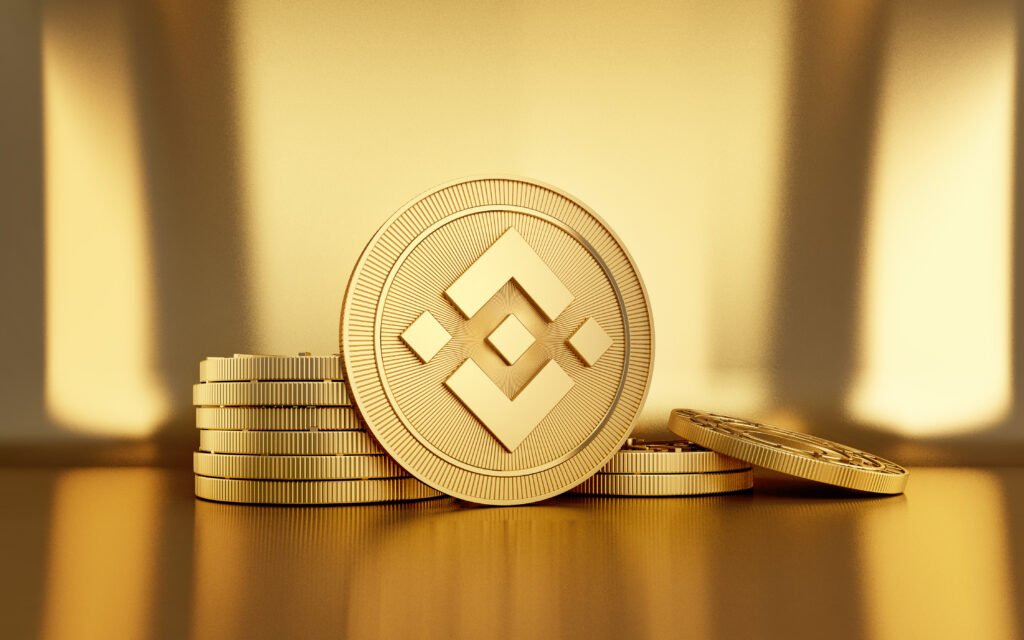
Binance Coin (BNB) is the native cryptocurrency of the Binance ecosystem, which includes the Binance Exchange, one of the world’s leading cryptocurrency exchanges by trading volume, and various other services like Binance Chain, Binance Smart Chain (BSC), Binance Academy, and more. Initially launched in July 2017 through an Initial Coin Offering (ICO), BNB was initially an ERC20 token on the Ethereum blockchain but later migrated to Binance’s own blockchain, the Binance Chain, in April 2019.
Key Features of Binance Coin:
- Utility Token: BNB started as a utility token for the Binance exchange, offering users discounted trading fees when paying with the token. Its utility has significantly expanded since then to various applications within the Binance ecosystem and beyond, including transaction fees on Binance Chain and Binance Smart Chain, participation in token sales on Binance Launch pad, payments for goods and services, and more.
- Binance Chain and Binance Smart Chain (BSC): Binance Chain was launched by Binance to facilitate fast, decentralized trading. Binance Smart Chain is a parallel blockchain that adds smart contract functionality and compatibility with Ethereum’s tools and DApps, significantly expanding the use cases of BNB. These two chains operate side by side, with BSC in particular gaining significant traction in the decentralized finance (DeFi) space.
- Burn Mechanism: Binance uses a portion of its profits to buy back and “burn” BNB tokens every quarter, reducing the overall token supply until 50% of the total BNB supply (100 million BNB) is destroyed. This mechanism is intended to help sustain BNB’s value over time.
- Governance and Staking: On Binance Smart Chain, BNB is used for governance, allowing holders to vote on community proposals and decisions. BNB can also be staked to support network security and operations, with stakers earning rewards.
- Wide Range of Use Cases: Beyond its initial use case for trading fee discounts on the Binance exchange, BNB can be used for a variety of purposes, including travel bookings, entertainment, financial services, and online services. Binance and thirdparty services continue to expand the utility of BNB.
- Adoption and Acceptance: As the Binance ecosystem has grown, so has the adoption and acceptance of BNB. It’s increasingly used in a variety of DeFi projects, and its acceptance as a payment method by merchants and service providers continues to grow.
- Performance and Scalability: Binance Chain and Binance Smart Chain are designed with a focus on high throughput and low transaction fees, making them attractive for both traders and developers. BSC, in particular, has been popular for DeFi applications due to its Ethereum compatibility and efficient performance.
Binance Coin is central to the operation and utility of the vast Binance ecosystem, supporting a wide range of functions and services. Its success is closely tied to the popularity and adoption of the Binance platforms and the broader Binance ecosystem. As the cryptocurrency and blockchain industry continues to evolve, BNB’s role as a utility token with multiple use cases positions it as an important asset in the crypto space.
Market Capitalization: High
Trading Volume: High
Liquidity: High
Use Case/Adoption: Great (large user base and continuously new use cases introduced by Binance)
Tokenomics: Medium (burn mechanism to reduce supply is great, but the initial sale is still concentrating a huge amount of the total supply in the hands of founders and early investors, who could enact immense impact on the market)
Development Team: Great
Community Support: Great
Security & Transparency: Bad (sadly Binance Smart Chain, Binance Chain and Binance as an exchange itself are controlled by a small group of powerful entities, which pose a definite security risk)
Performance: Great
-
Thorchain RUNE
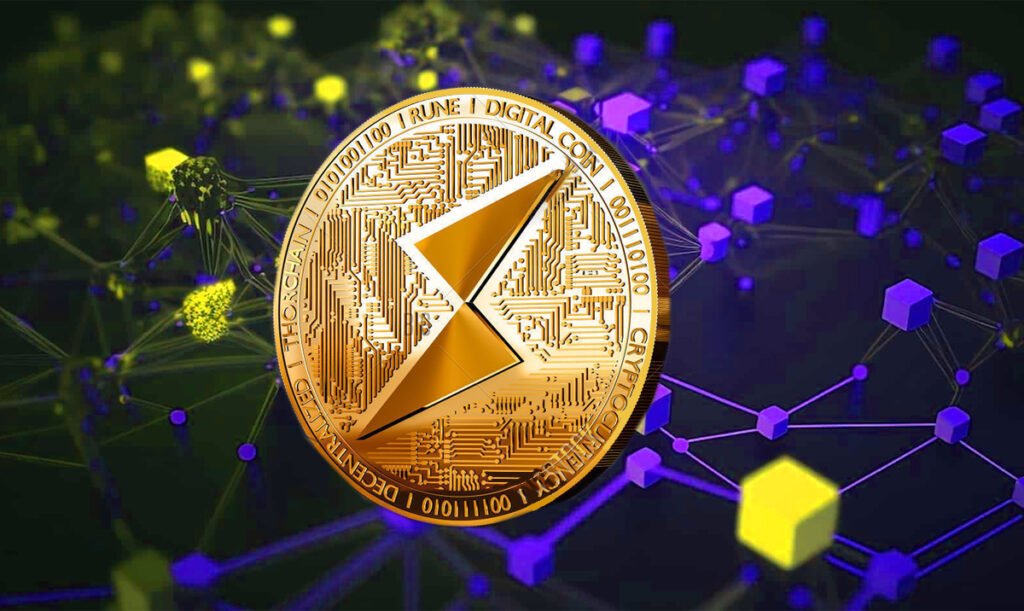
Thorchain (RUNE) is a decentralized liquidity protocol that enables users to easily exchange cryptocurrency assets across different blockchains without losing custody of their assets in the process. Unlike centralized exchanges that require users to deposit their assets before trading, Thorchain allows for crosschain swaps in permission less and trust less manner, aiming to provide decentralized finance (DeFi) services to a wider range of cryptocurrencies.
Key Features of Thorchain:
- CrossChain Swaps: Thorchain’s primary feature is its ability to facilitate secure and decentralized exchanges of assets between different blockchains. This is achieved through its innovative technology, which includes continuous liquidity pools (CLPs) similar to those used by automated market makers (AMMs) but adapted for cross chain trades.
- Decentralized Liquidity Pools: Users can supply liquidity to the protocol’s pools and earn trading fees in return. This liquidity provision is essential for the operation of the AMM, which relies on the liquidity pools to enable asset swaps. Thorchain supports liquidity provision for multiple assets, enhancing the protocol’s flexibility and utility.
- RUNE Token: The native token of Thorchain is RUNE. It serves several critical functions within the ecosystem, including acting as the base currency for liquidity pools, securing the network through bonding by nodes (validators), and facilitating governance decisions. RUNE is also used for rewards and incentives within the Thorchain ecosystem.
- Security and Incentives: Thorchain employs a unique security model that aligns incentives between liquidity providers and node operators. Node operators must bond RUNE tokens, with the value typically needing to match the value they are securing. This mechanism helps to ensure the security and integrity of the network.
- Permission less: The protocol is designed to be permission less, allowing anyone to participate without the need for KYC (Know Your Customer) procedures. This opens up the DeFi space to a broader audience, enabling more users to engage with decentralized finance without the barriers present in traditional finance.
- Interoperability: By facilitating cross chain exchanges, Thorchain addresses one of the major challenges in the cryptocurrency space: interoperability between different blockchains. This interoperability is crucial for the seamless transfer of value across the crypto ecosystem.
- Community Driven Governance: Thorchain incorporates elements of community driven governance, allowing stakeholders to have a say in the development and decision-making processes of the protocol.
Thorchain represents a significant step forward in the pursuit of fully decentralized and interoperable financial services within the cryptocurrency space. Its innovative approach to cross chain liquidity and exchanges aims to create a more interconnected and accessible DeFi ecosystem, where users retain full control over their assets without relying on centralized intermediaries.
Market Capitalization: Medium
Trading Volume: Medium
Liquidity: Medium
Use Case/Adoption: Medium (decentralized crosschain swaps are an amazing and very much needed use case, but so far Thorchain sees little adoption)
Tokenomics: Great (validators are required to stake RUNE and every liquidity pool needs a mirrored amount of RUNE locked in it, resulting in high demand of the token with increasing adoption)
Development Team: Great
Community Support: Medium
Security & Transparency: Great (Thorchain aims to be the solution for the very many bridge hacks we have seen in the past when it comes to swapping assets between different blockchains)
Performance: Medium
Next Big Cryptocurrency in 2024?
Predicting the “next big cryptocurrency” is inherently speculative and fraught with uncertainty. The cryptocurrency market is highly volatile and influenced by a wide range of factors including technological advancements, regulatory developments, market sentiment, and broader economic trends. However, I can highlight some criteria and trends that might help identify promising projects or areas within the crypto space that have potential for significant growth in 2024 and beyond. Remember, investing in cryptocurrencies should be approached with caution and a clear understanding of the risks involved.
Criteria for Potential Growth
- Innovation and Unique Use Cases: Cryptocurrencies that offer unique solutions or innovations, especially those that address current limitations in the blockchain space (such as scalability, interoperability, and privacy), tend to attract attention.
- Strong Development Team: Projects backed by a strong, experienced, and transparent team are more likely to succeed and deliver on their roadmap.
- Community Support and Adoption: A strong, active, and growing community can provide the necessary support and network effect needed for a cryptocurrency to thrive.
- Partnerships and Ecosystem: Projects that establish meaningful partnerships and are part of a larger ecosystem can see increased adoption and utility.
- Regulatory Compliance: Cryptocurrencies that navigate the regulatory landscape effectively may have a strategic advantage, especially in regions with strict regulatory requirements.
Trends and Areas to Watch
Decentralized Finance (DeFi): Innovations within the DeFi space continue to attract attention, with potential for new projects that improve accessibility, yield opportunities, and financial instruments.
Web3 and Decentralized Applications (DApps): The push towards a decentralized web might spotlight cryptocurrencies that offer unique solutions for decentralized identity, storage, and more seamless interaction between users and applications.
Layer 2 Solutions: With the ongoing need for scalability in networks like Ethereum, Layer 2 solutions that offer faster transactions and lower fees could gain prominence.
Interoperability Protocols: As the blockchain space grows, the ability to seamlessly exchange information and value across different blockchains will become increasingly important, highlighting projects that work on interoperability.
Sustainability and Green Cryptocurrencies: In response to growing concerns about the environmental impact of cryptocurrency mining, projects focusing on energy efficiency and sustainability could see increased interest.
Privacy Coins: Enhanced privacy remains a sought-after feature for many users, potentially driving interest in privacy focused cryptocurrencies, especially in light of increasing regulatory scrutiny.
NFTs and Digital Ownership: The no fungible token (NFT) market has expanded beyond digital art into areas like gaming, entertainment, and real estate, suggesting potential growth for projects in this space.
Conclusion
While it’s tempting to search for the “next big thing,” it’s crucial to conduct thorough research, consider the project’s fundamentals, and understand the risks involved in cryptocurrency investments. Trends can shift rapidly, and what seems promising today might face challenges tomorrow. Diversification and a clear investment strategy aligned with one’s risk tolerance are key principles to follow in the volatile world of cryptocurrencies.
